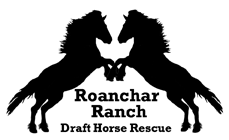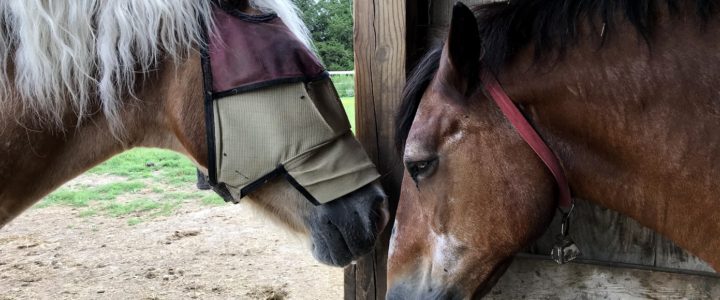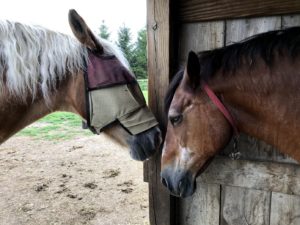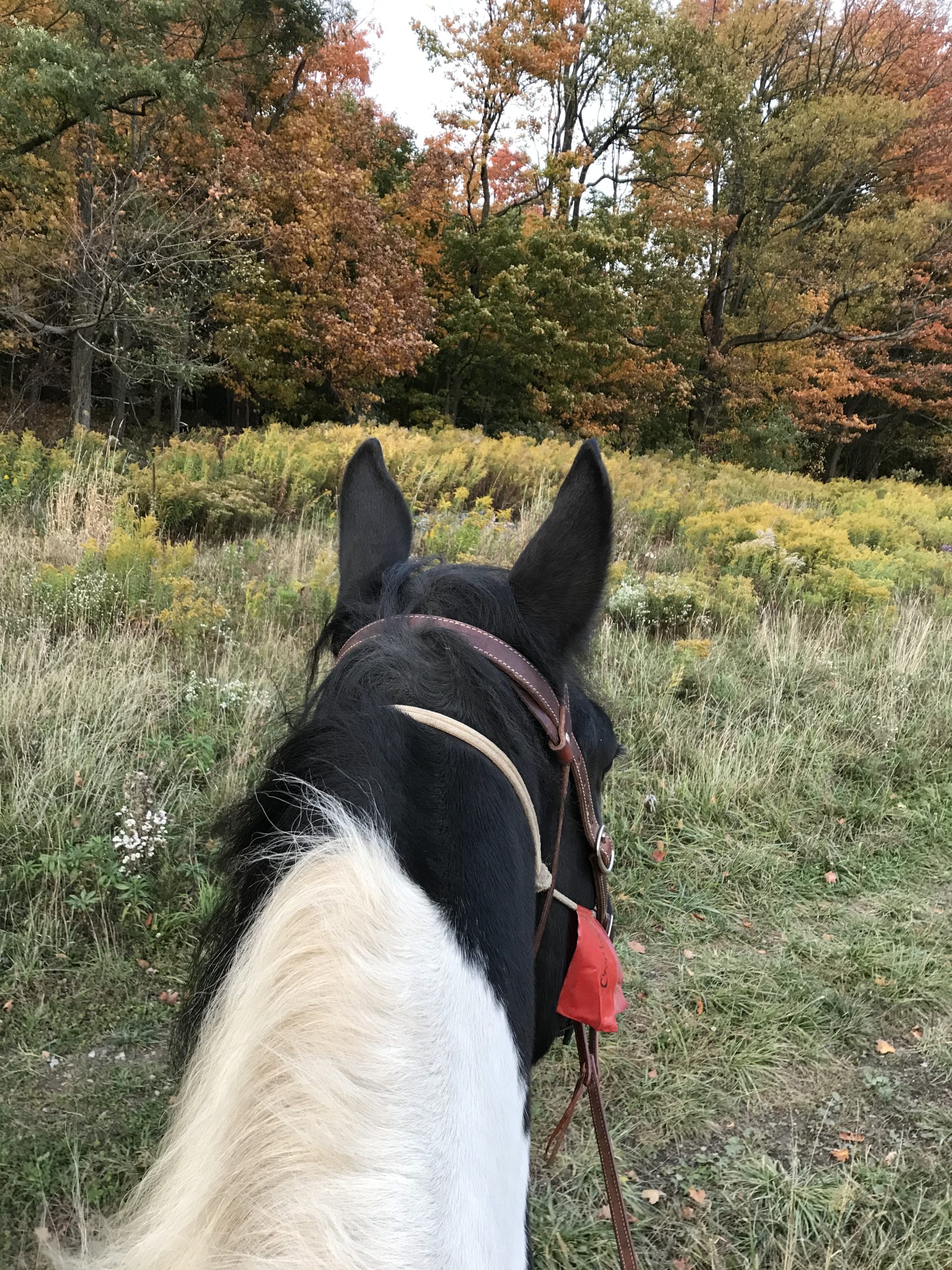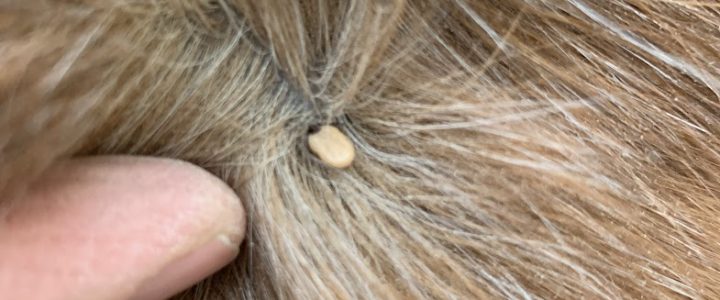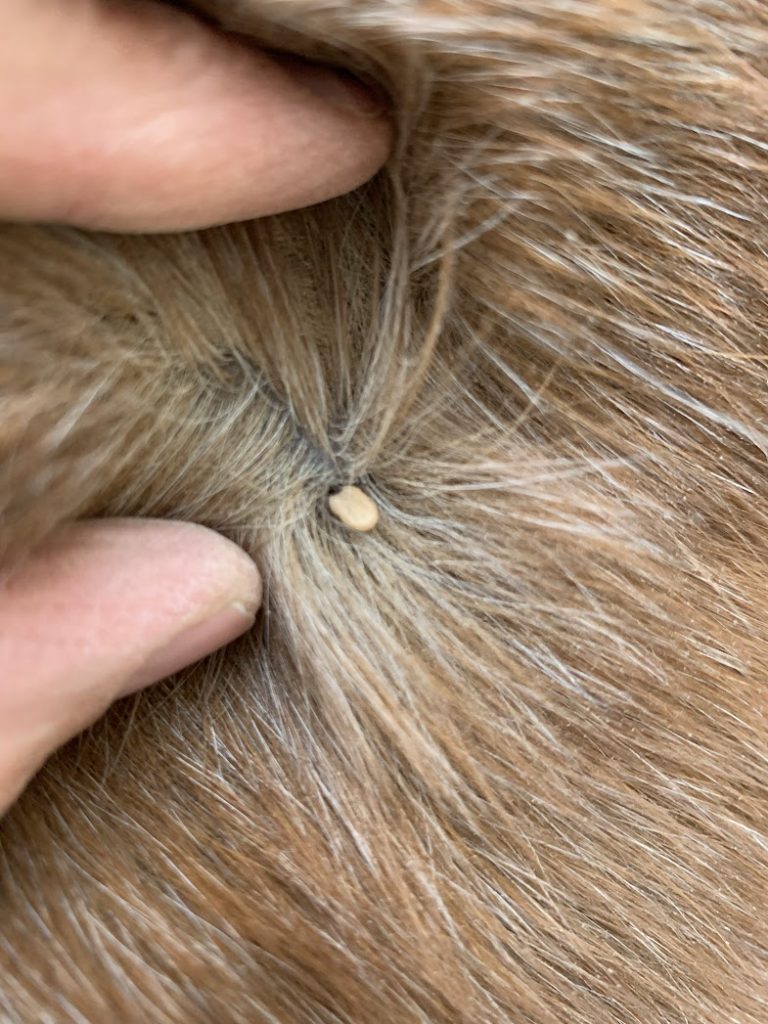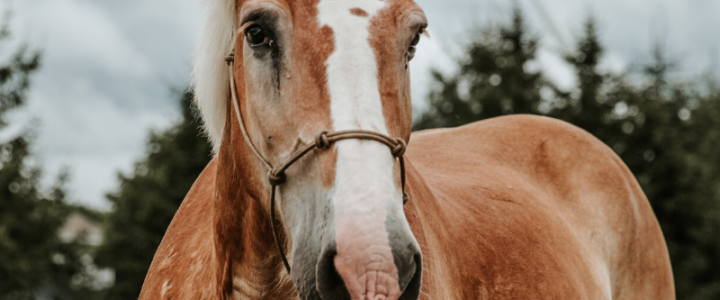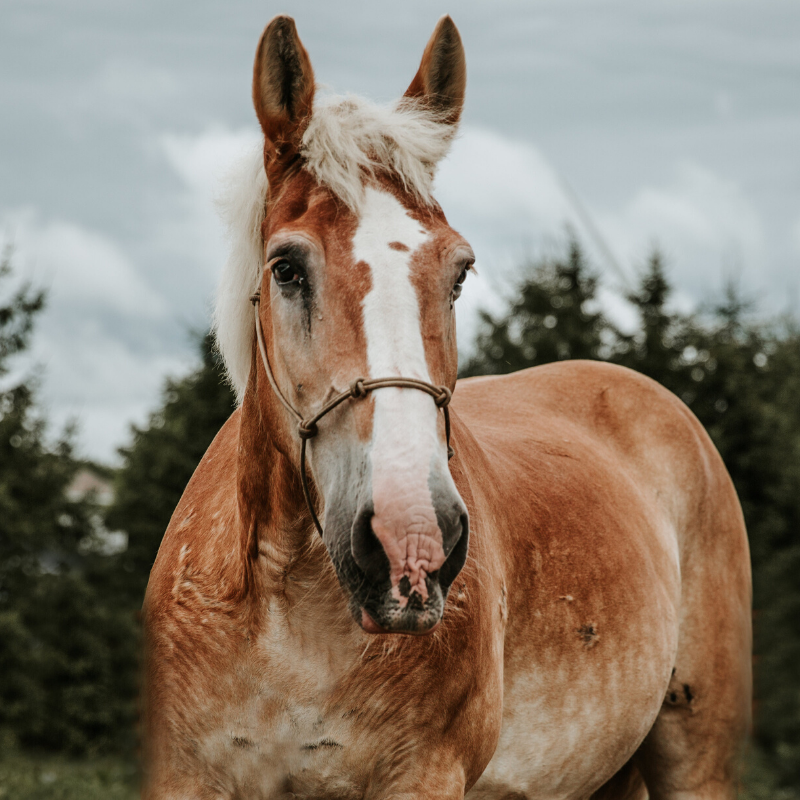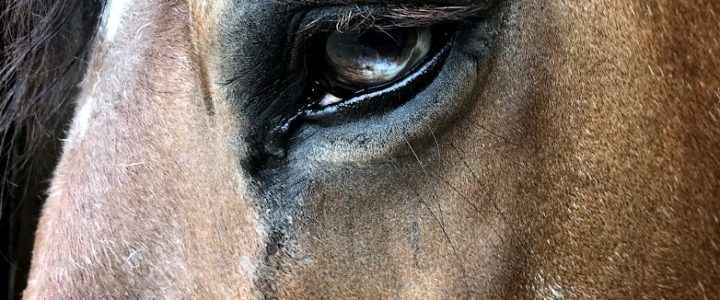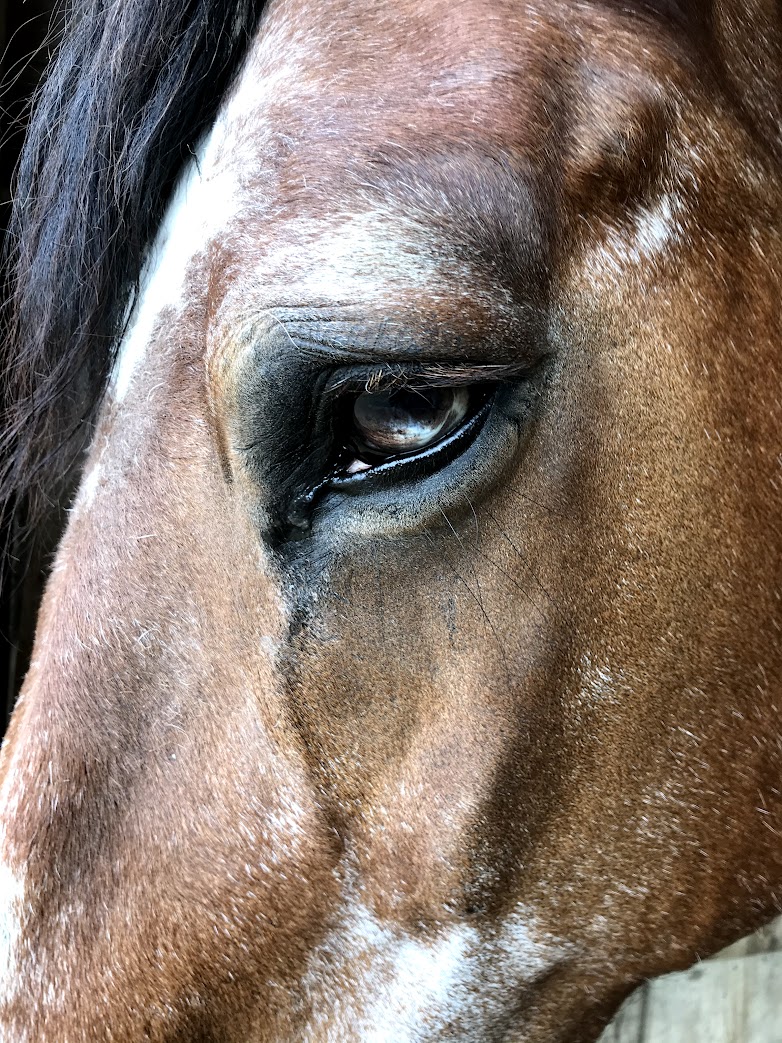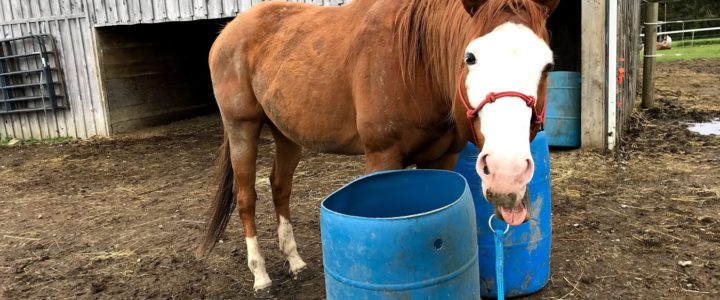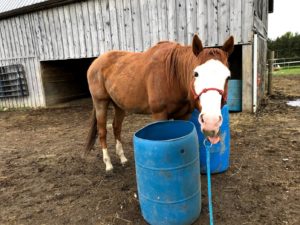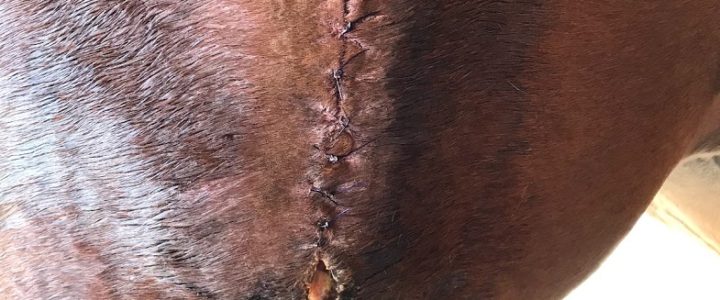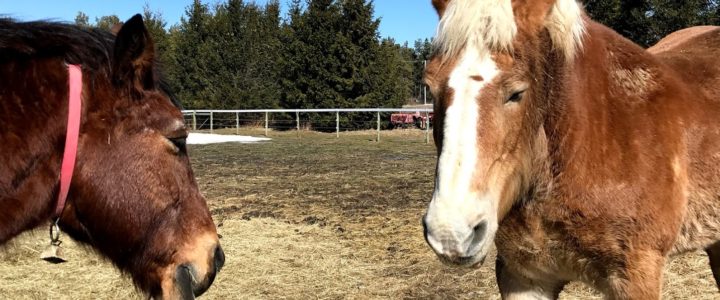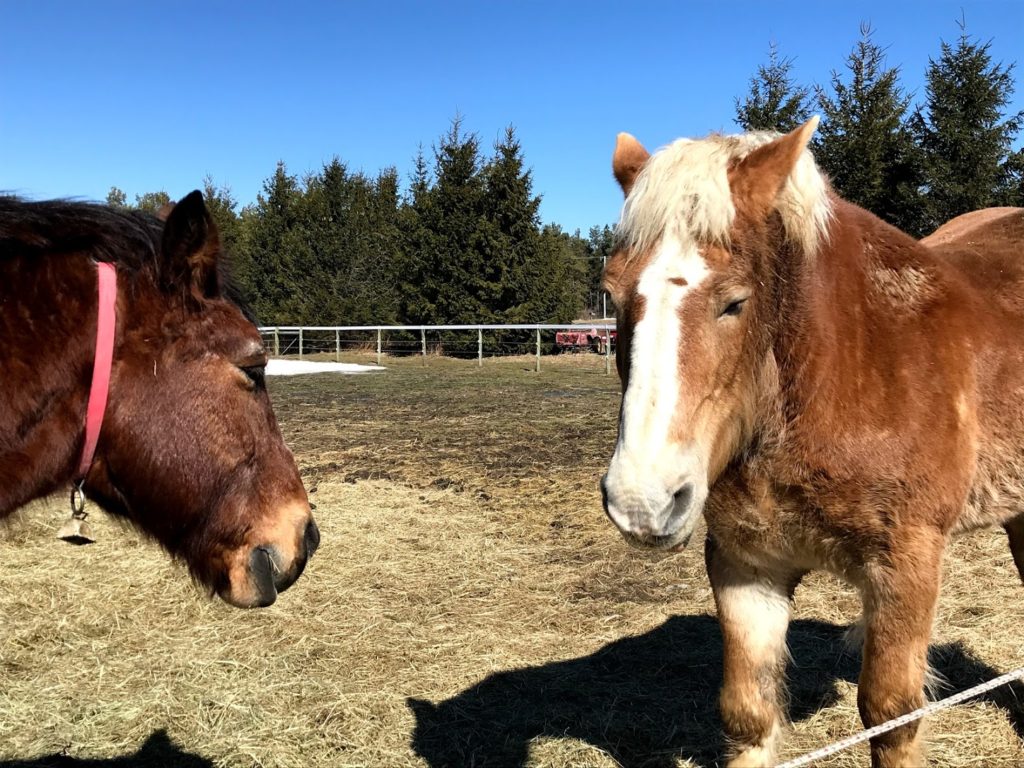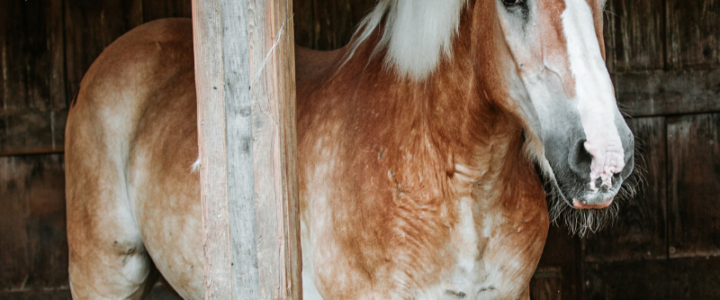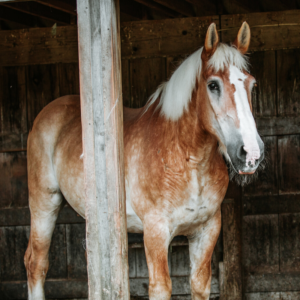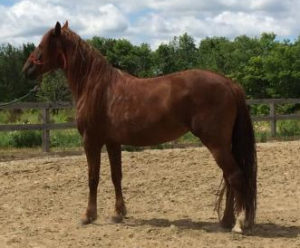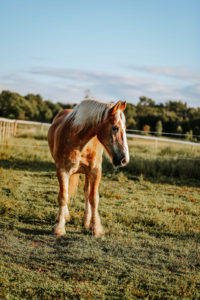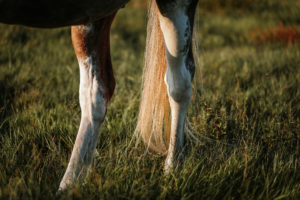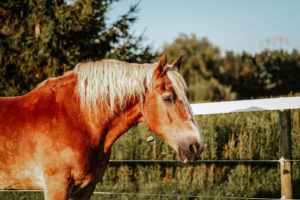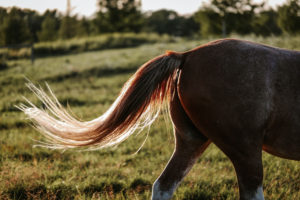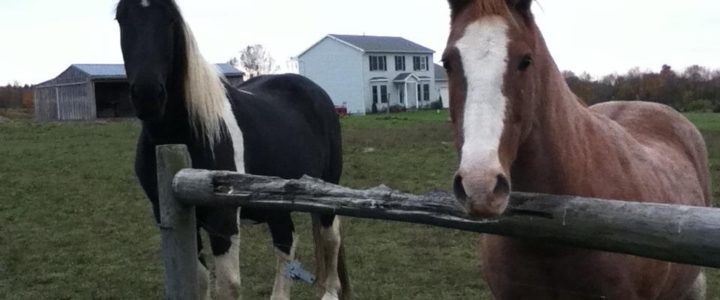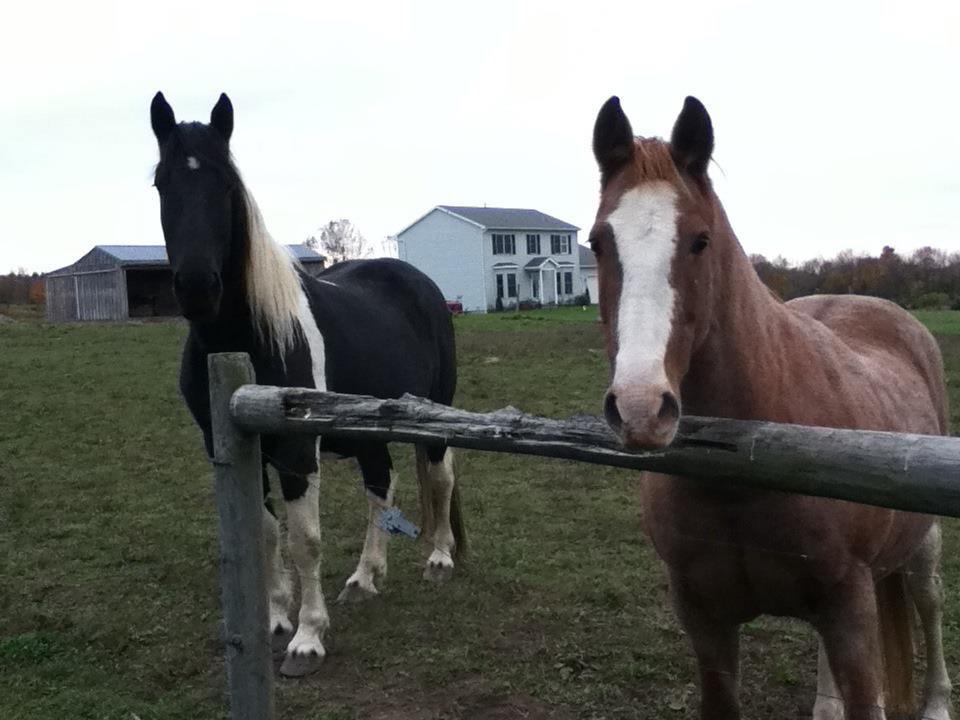Barney had shut down from the heartache of losing his friends. In a few short years, he lost Titan, Jesse, and Fox. The loss of Titan hit Barney the hardest. By the time that he lost Fox, he had become solitary. He didn’t let anyone in until he meet Gabby.
Gabby arrived and immediately had an impact on Barney. Her calm demeanor put Barney at ease, as did her ability to communicate with a flick of her head instead of a strike or a bite. Barney quickly realized that Gabby had no intention of hurting him.
It didn’t take long for Barney and Gabby to go out on adventures together. Some days Gabby would lead to find a place to eat and other days Barney would to find a soft spot to nap. The two of them were inseparable.
Meal time was no different. They would eat their feed in the barn together and then retreat to the “patio” for their hay. Where ever one was, the other was right there. Days and weeks passed and their bond grew stronger.
As Gabby’s hoof began to get worse, Barney was by her side to comfort her. It didn’t matter if Gabby’s hoof was being treated or if she was resting. Often times Gabby would lay in the barn and Barney would stand over her while she slept. He would ever so gently lean down to touch her with his nose and make sure that she was okay.
On the day that we let Gabby go, we walked her outside the pasture that she shared with Barney. As Barney realized that she was not with him, he began to get upset. Gabby quietly called to him and Barney was able to find his way to her.
The beautiful pair spent the rest of the day together. Blissfully happy to be in each other’s company.
Don’t miss out on the latest news from the ranch! Sign up for our monthly newsletter today.
